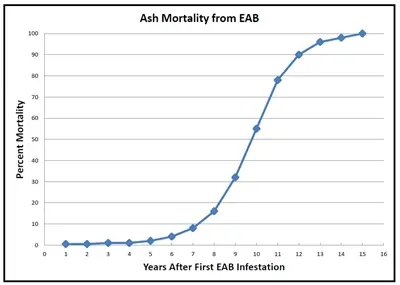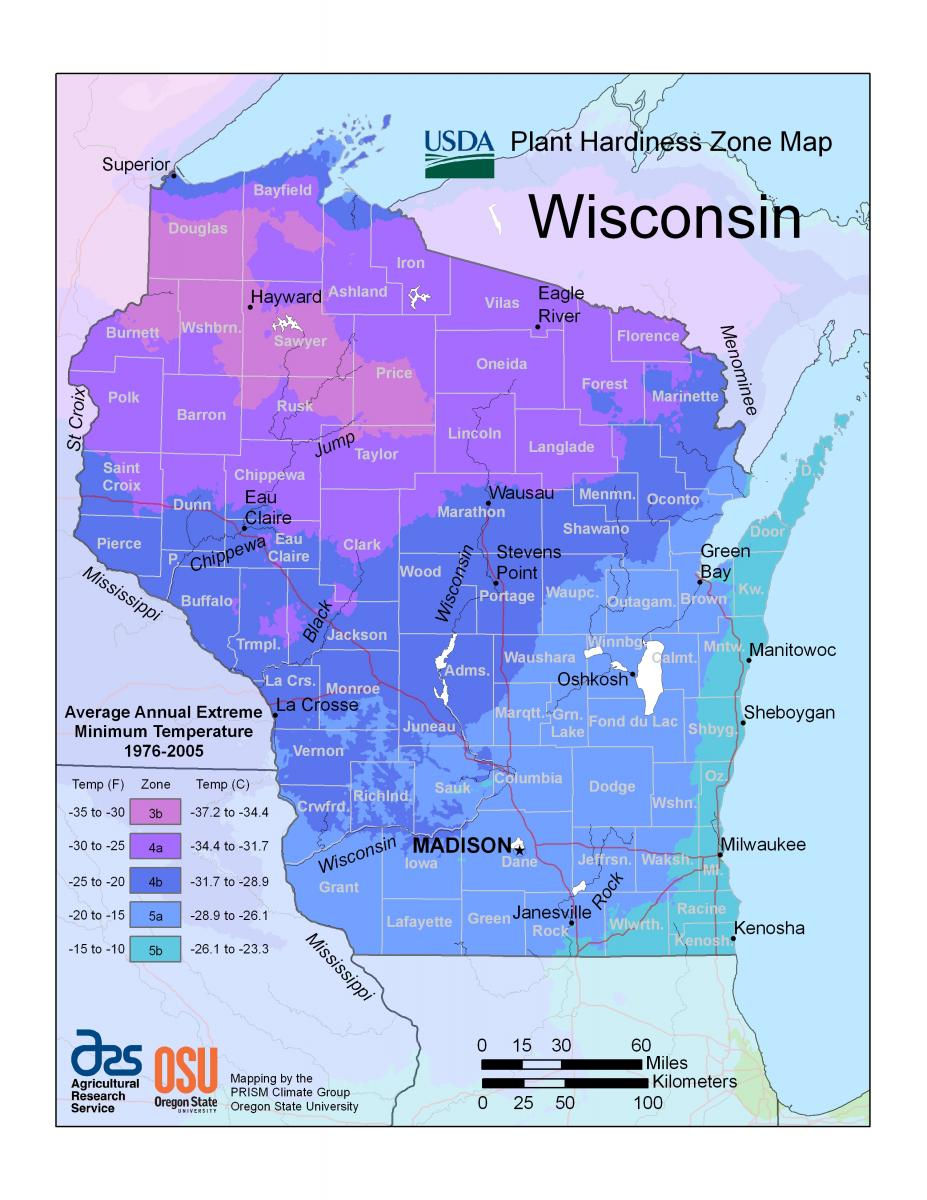Emerald ash borer (EAB) was first found in Wisconsin in 2008. At that time I was a few years removed from college and working as an arborist near Saukville, where it was found. I remember seeing the trees where EAB was first identified. There was a grouping of ash outside of town with noticeable canopy dieback. All other ash trees in the area looked fine. That was fifteen years ago. Now the only ash (fraxinus spp.) trees you see in the greater Milwaukee area are trees that have been treated to protect against EAB. The groves of dead ash trees standout when driving south towards Milwaukee on highway 41 or 43 and show us just how destructive this pest is. It also offers a glimpse into the future of ash trees in northern Wisconsin as EAB continues to migrate further north in the state.

EAB was first found in Appleton in 2015, eight years ago. Chances are it was here a few years before then, we just didn't see the symptoms yet. That suggests about a third to half of Appleton's ash trees that have not been treated are, or almost, dead. Within a couple years the vast majority of untreated ash trees will be dead. The longer EAB is in an area, the more ash trees are affected and management options are reduced. If you have an ash tree(s) here are your options.
Option 1:
Treat the tree to protect against EAB. The window for this option is closing fast and probably won't be available in a year or two. If you would like to save your tree, first have it inspected by a certified arborist to see if it is a candidate for treatments. Trees with more than 30% canopy dieback or certain defects, might not be good candidates for treatments. Not all ash trees can be saved.
To find a certified arborist in your area: https://www.treesaregood.org/findanarborist
If the trees are a candidate for treatments you have a couple options. Certain insecticides, like imidacloprid, are available to the homeowner at local garden centers and big box stores. These products are relatively inexpensive and easy to use. The insecticide is usually mixed with water and applied to the base of the trees during periods of active growth. Healthy trees absorb the insecticide through the roots and move the product throughout the tree, eliminating EAB larvae. These insecticides need to be applied once a year. The problem that I have observed with this method is certain factors like soil moisture, wind, time of day, nearby vegetation, etc... can limit the tree's ability to absorb the product. It's like the saying "you can lead a horse to water but can't make it drink ". Everything can be done correctly with this application: mixing of the product, proper application, proper timing... but the tree still might not absorb all the product. I've seen the soil application used in hundreds of trees and there are cases where it's not protecting all of them.
Note: if you decide to do this option yourself make sure to read and follow all label directions.
The preferred and most effective method is injecting an insecticide into the trunk. When done correctly, this method ensures the product gets inside the tree. Trunk injections require specialized equipment and should be performed by an experienced arborist. These treatments are effective for two years. There is some evidence that this method, when the product is used at the label's " high" rate, can control EAB for up to three years. Given the fact that EAB populations are reaching their peak over the next couple years, I advise trunk injections to be done every two years. I view the three year interval more for when EAB populations drop significantly in the future, perhaps in 5-7 years from now.
Option 2:
Do nothing with your ash trees. This is a strategy for some if they don't want to pay treatment costs (keep in mind there is also a cost for removing trees as well) or if the trees are in an area away from people and pose little risk. If this option is for you, it's important to understand that ash trees killed from EAB break apart and fall over quicker than other dead trees. This is because EAB trees dry out faster due to the nature in which the larvae kills the trees. We have seen ash trees fall over as soon as 3 years after they were killed by EAB. The majority of ash trees that have been killed by EAB fall over about 5 years after they're dead and most all have fallen 10 years after being killed. If dead ash trees are around people, they will pose some level of risk and should be removed.
Option 3:
Have your trees removed now before it becomes more of a risk. We know that EAB killed trees will likely fall within 10 years after they're dead. By removing the trees now you reduce the risk associated with them. Costs associated with removing dead trees generally are higher than if the trees were alive. This is because dead trees are less predictable then living trees and removal options are often limited with dead trees. You might save yourself some money by removing the trees now before it becomes more hazardous.
Winters in northeastern Wisconsin are not cold enough to eliminate EAB
Based on research by the US Forest Service EAB larvae die when their body temperature reaches -19 degrees Fahrenheit. In order for this to happen air temperature (not wind chill or feels like temperature) must be -25 degrees Fahrenheit. This is because EAB larvae overwinter inside the tree, where it can be a few degrees warmer than outside of it. At -25 degrees Fahrenheit air temperature, about 50% of EAB larvae die. At -30 degrees Fahrenheit air temperature EAB mortality rates increase to about 90%. It's suggested that 92% larvae winterkill is needed to keep EAB populations in check.
What does that mean for Wisconsin?

The coldest temperature in Appleton, Wisconsin last year was -11 degrees Fahrenheit, not cold enough to kill off EAB larvae. In fact you have to go back to 1951 when Appleton recorded a temperature of -30. The coldest areas in Wisconsin, hardiness zone 3b, do occasionally receive winter temperatures around -30 degrees Fahrenheit. This can help slow the spread of EAB and allow trees to recover between attacks but it will not completely eliminate the insect.

Comentarios